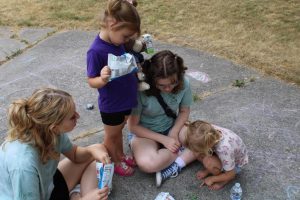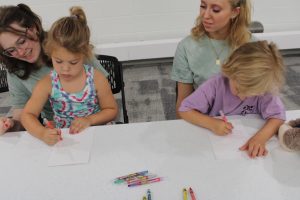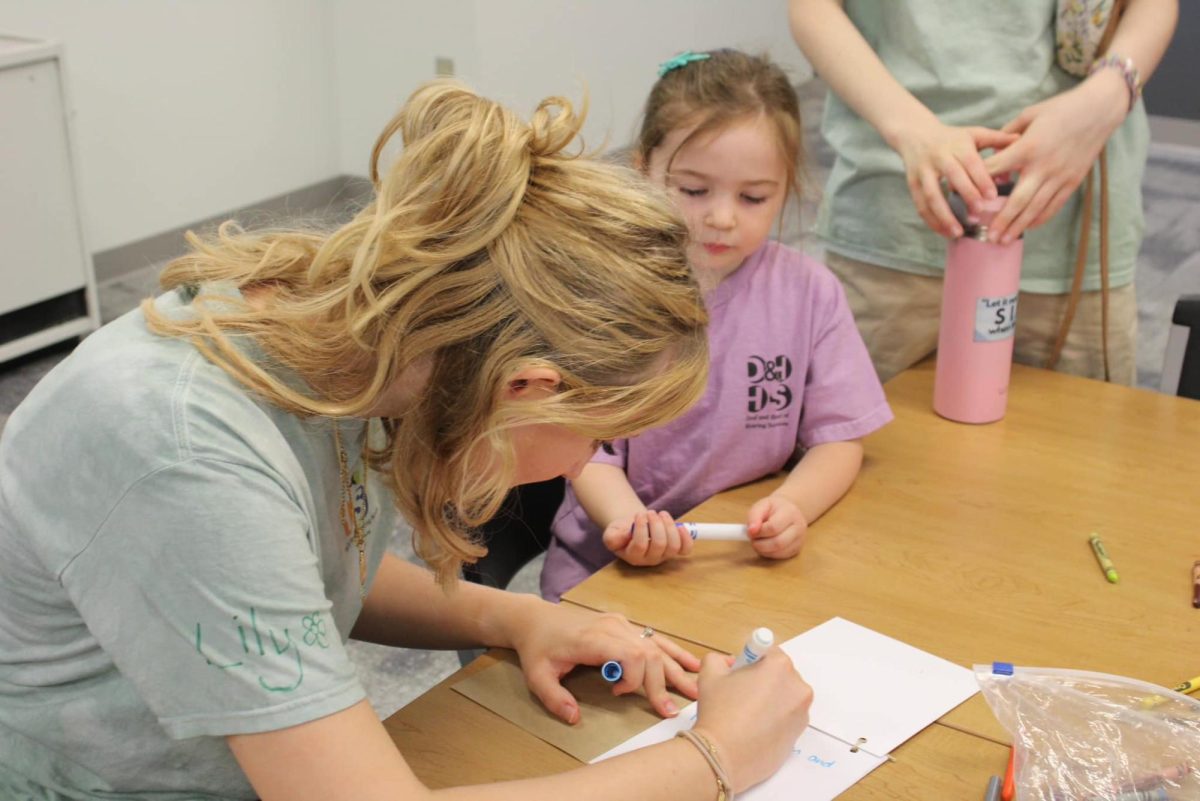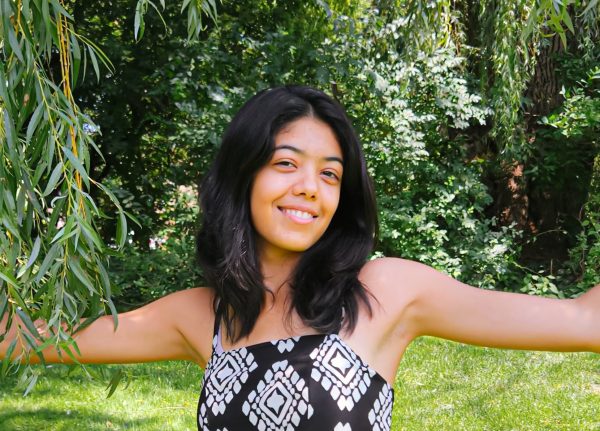Senior Molly O’Meara has always wanted to be able to communicate with her nonverbal younger cousin Louis.
And so, she took American Sign Language (ASL) classes in high school to do just that. Molly is one of many students at FHC learning ASL, some of whom have also been looking for ways to take their engagement in the language to the next level—outside of the classroom.
A few years ago, a couple of students in the fourth and highest level class of ASL had an idea for exploring the language further: teaching. With the help of American Sign Language teacher Kimberly Anderson, they were able to get started, and the next year, the school began offering the opportunity as an Independent Study course.
For the class, students raise awareness for or teach ASL weekly in various community placements, mostly local schools.
“[Having students teach in schools] went really well,” Anderson said. “The feedback from the community was fantastic. If you want to do ASL as a career and you want time spent in that career kind of like a job shadow-ish opportunity, let’s make it an independent study. That’s been really fun and really, really cool.”

The amount of students volunteering from FHC has expanded thanks to the opportunities they’ve had as they now teach students across elementary schools and high schools, including Lowell High School, where students can sign up to be taught ASL by FHC students in seminar sessions every few weeks.
Senior Katie Cushman is grateful to help out with the Deaf and Hard of Hearing Services (DHHS), where she is involved in the activities they host for various Holidays, including Halloween and Christmas when they have a signing Santa. Much of her time volunteering is spent with kids, which is perfect for her as she aspires to be an elementary school educator one day. She is motivated by the importance of her work with them.
Because the deaf population in West Michigan is much smaller than it is on the east side of the state, Katie finds that it is especially important that they volunteer to sign with them.
“It’s a small community so you see a lot of the same people over and over again,” Katie said, “but you’re building that connection with them.”
Building a connection with the people they sign with is incredibly important in furthering their communication with each other.
Molly, who’s interested in majoring in deaf education, helps out with several activities from crafts to math at West Oakview Elementary while signing the whole time, and she agrees that connection is a vital part of signing.
“I love the little [ASL Independent Study] class,” Molly said, “The culture is super nice. I love how it’s an expressive language. It’s not just talking to a person, you have to be connected with the person to fully understand what they’re talking about.”
Ultimately, through establishing connections and sharing expressions, communication is the end goal. This is true for any language, but it is especially important for people who face continuous barriers to communication. The ASL students are helping to bridge that gap in communication.
Many of the connections that Molly has built are with the preschool, kindergarten, and first-grade students at Northview Elementary School.
“When [the kids I volunteer with] see that someone knows their language or knows how to communicate with them, their faces light up,” Molly said. “They get really excited because they live in a world where it’s hearing-dominated, and not many people know sign language.”
Katie has had similar experiences with the kids she volunteers with, and they make up some of her favorite memories of volunteering with the deaf community.
Over the summer, she spent some time at a kids’ camp, and in the fall, she saw the same kids again at an elementary school that specializes in education for deaf and hard-of-hearing children.
“The four to five-year-olds loved us so much,” Katie said. “There wasn’t a communication barrier. They [became] so attached. They actually clung on to us, and we had to drag them to the next activity. And, more recently, [the kids] recognized me, and they were so excited to see me. I was like, ‘Oh my gosh, this is so cool’ because they’re four years old, and most four-year-olds don’t remember somebody like six months later.”

With each person joyous to connect and each individual relationship formed together, a community is built.
For many people who are deaf, their friends and family don’t sign, so having a space where they can truly communicate with others is so important. This is what strengthens the relationships between members of the deaf community as they have a chance to engage in one of the most important aspects of community building without the barriers they may otherwise face.
“I’ve watched [Molly] there [when volunteering],” Anderson said. “She is such a role model for those kids, and she’s almost like a big sister. They have Molly there to hang out with and to play, [and she] does know sign so they can talk in their natural language, which is really cool.”
Each of the students that volunteer doesn’t just help out with carrying out the planned activities, but they are also giving many children in the community the chance to communicate and interact with them in a way they might otherwise be unable to.
Knowing sign language breaks down communication barriers and has created a community between FHC students and the deaf and hard-of-hearing population of West Michigan.
“The fact that we know sign and we can communicate with the people who are going to the events that they hold is really important,” Katie said. “It’s special for them to meet people who know their language and can talk to them. Communication is important. It builds community. It keeps people from getting isolated. You can’t really have a community without people communicating.”
This community aspect is one that’s not only formed strong bonds between the students and the people they sign with but also has exemplified the altruistic mindset of the volunteers, which Anderson is very proud of.
Anderson has found and offered these opportunities to Molly, Katie, and many other students learning ASL at FHC. Guiding them in their efforts, Anderson has found that the experience has been rewarding not just for the deaf community, but also for the students who step up to help out with them.
“It’s been really fun for my kids to realize they have something special—that they have gone through three and a half years of this language, and they are knowledgeable enough to teach other people and to share it,” Anderson said. “[They are] always met with welcome arms. People are so grateful and excited to take part in this, and it’s not me doing it. It’s them. I think the fact that they took initiative and were proactive in saying, ‘I want to do more’ is a really fulfilling part of their life.”



























































































